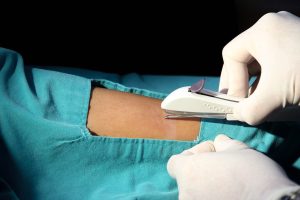Birth control implants are matchstick-sized, tiny, thin, and flexible devices implanted beneath the skin of the upper arm to give long-term birth control. The implants secrete progestin, a hormone that prevents conception by thickening cervical mucus, inhibiting ovulation, and thinning the uterine lining.
Dr. Susan Fox’s Center For Women offers the two most commonly used birth control implants – Nexplanon (etonogestrel implant) and Implanon, both arm implants approved by the FDA and available in Miami. While both of these implants function and appear the same, they differ slightly in terms of effectiveness and negative effects.
How Nexplanon And Implanon Work
Implanon and Nexplanon are both progestin-only birth control implants that work by releasing a synthetic hormone called etonogestrel into the body. This hormone inhibits ovulation, thickens cervical mucus to prevent sperm from accessing the egg, and thins the uterine lining, making it difficult for a fertilized egg to implant in the uterus. These procedures have a success rate of more than 99% in avoiding pregnancy. They have a lengthy lifespan, lasting up to 3 years before needing to be changed.
Comparison Of Effectiveness Rates Of Contraceptive Implant
Both Nexplanon and Implanon implants are subdermal implants and highly effective at preventing pregnancy, with failure rates of less than 1%. However, studies have shown that Nexplanon may be slightly more effective than Implanon. According to a 2012 study, the failure rate for Nexplanon was 0.05% compared to 0.08% for Implanon.
Both implants are more successful than many other kinds of birth control, such as the pill, with an average failure rate of 7%. However, as with all birth control techniques, factors such as user error and medical problems can have an impact on the effectiveness of these implants.
Factors That Can Affect The Effectiveness Of Implanon And Nexplanon
There are several factors that can affect the effectiveness of Nexplanon and Implanon birth control implants. These include:
- Timing Of Insertion: Both implants must be inserted within the first five days of the menstrual cycle to ensure immediate effectiveness. If inserted later, additional birth control should be used for the first week.
- Body Weight: Studies have shown that women with higher body weights may have a lower effectiveness rate with the implants. Women with a BMI of 30 or higher are advised to investigate different kinds of reproductive control.
- Medications: Antibiotics and anticonvulsants, for example, can impair the effectiveness of the implants.
- Incorrect Insertion: If the implant is not inserted correctly, it may not provide effective contraception.
Common Side Effects Of Both Birth Control Implants
Nexplanon and Implanon are known to cause similar side effects, including:
- Irregular Menstrual Bleeding: Both implants can cause irregular bleeding patterns, including spotting, heavy bleeding, or even missed periods.
- Headaches: Some women may experience headaches, including migraines, after getting either implant.
- Acne: Acne is another possible side effect of both implants.
- Weight Gain: While weight gain is not a guaranteed side effect, some women may experience an increase in weight after getting either implant.
- Breast Soreness Or Pain: Some women may feel breast tenderness or discomfort as a result of both implants.
- Mood Changes: Both implants have been known to cause mood changes, including depression, anxiety, and mood swings.
- Skin Irritation Or Infection: There is a small risk of developing an infection or experiencing skin irritation at the site where the implant was inserted.
Rare But Serious Side Effects To Watch Out For
While birth control implants are generally regarded safe, women should be aware of some rare but serious side effects. Ectopic pregnancy, which occurs when a fertilized egg implants outside the uterus, generally in the fallopian tube, is one potential consequence. This is a medical emergency that must be addressed immediately.
Blood clots, liver tumors, and stroke are also major consequences, albeit they are extremely rare. Women who have significant lower abdominal pain, chest pain, shortness of breath, leg swelling, severe headache, or vision abnormalities should seek medical assistance right once. These symptoms could indicate a significant side effect that necessitates immediate medical intervention.
How Both Implants Are Inserted And Removed
Both Nexplanon and Implanon are small, flexible plastic implants that are inserted under the skin of the upper arm. A healthcare provider should perform the operation according to the National Library of Medicine, which is usually done in an office setting.
To insert the implant, the area is first numbed with a local anesthetic. The healthcare provider then makes a small incision in the skin and inserts the implant using a special applicator. The implant is placed just under the skin, where it slowly releases hormones into the body to prevent pregnancy. The procedure takes only a few minutes to complete and is considered relatively painless.
Removal of the implant is also done by a healthcare provider. The area is numbed with a local anesthetic, and a small incision is made to locate the implant. The implant is then gently removed using forceps. The entire removal process usually takes only a few minutes.
Comparison Of Procedure Time And Discomfort Level
Nexplanon and Implanon are both inserted and removed using similar procedures. However, the differences in their design affect the specific steps taken during insertion and removal.
The Nexplanon implant is inserted just under the skin on the inner side of the non-dominant upper arm. Before the procedure, the area is numbed with a local anesthetic. Once the area is numb, a healthcare provider inserts the implant using a pre-loaded insertion device. The entire procedure usually takes only a few minutes, and patients may feel slight pressure or discomfort during the insertion process.
Implanon, on the other hand, is inserted in the same manner as Nexplanon, but with a different insertion device. The implant is inserted on the inner side of the non-dominant upper arm, just like Nexplanon. The procedure is quick and usually only takes a few minutes. Patients may feel mild discomfort or pressure during the insertion process.
The removal of both implants is similar to the insertion process. The healthcare provider will locate the implant and numb the area with a local anesthetic. They will then make a small incision and remove the implant. Removal of both implants is generally quick and well-tolerated, with most patients experiencing only minor discomfort.
Where to get Nexplanon and Implanon in Miami
Nexplanon and Implanon, two widely sought-after birth control implants, can be obtained from several health clinics and healthcare providers in Miami, like Dr. Susan Fox’s Center For Women.
At Dr. Susan Fox’s OBGYN clinic, you can expect exceptional care and personalized service. Our dedicated team of healthcare professionals understands the significance of birth control choices and respects your individual needs. We offer a range of contraceptive solutions, including Nexplanon and Implanon, ensuring you receive the care you deserve.
When deciding between Nexplanon and Implanon, it’s important to consider your unique requirements and preferences. While both options provide highly effective contraception with minimal side effects, slight differences in their design and composition may make one more suitable for certain individuals. Remember, choosing an effective and safe contraceptive empowers you to take control of your reproductive health and lead your best life.
Contact us for more information about your reproductive health.







